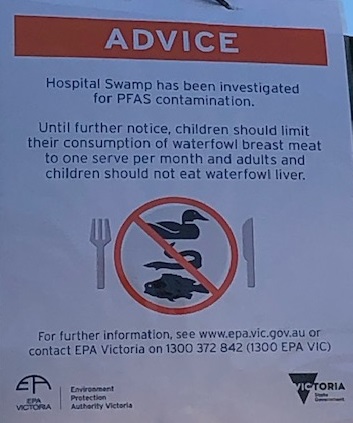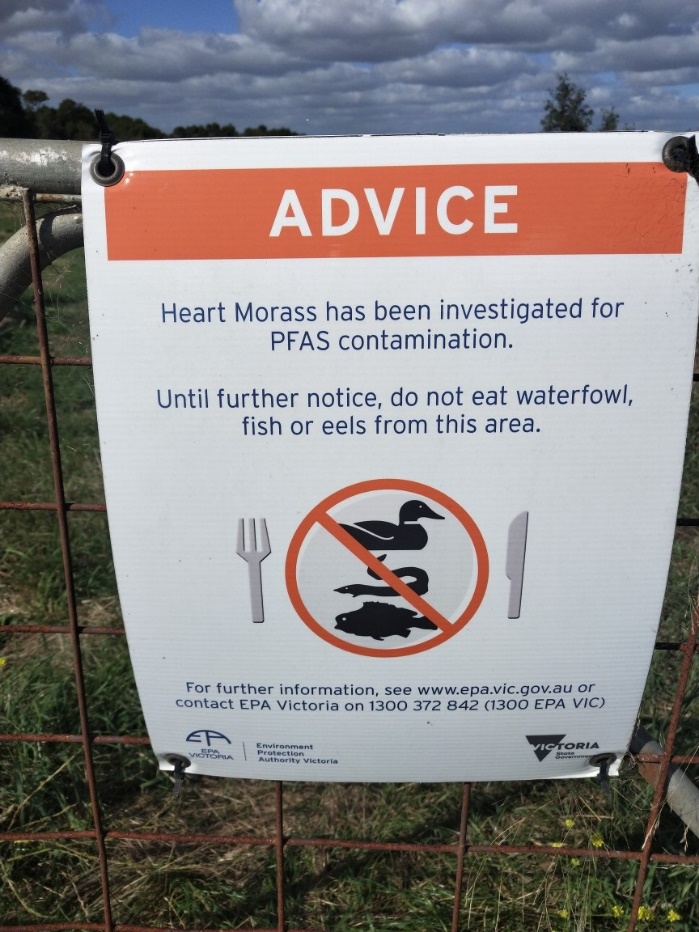Menu
PFAS, cancer & other pathogens
Consuming wild birds puts shooters and their families at risk from PFAS and zoonotic pathogens, either bacterial, viral or parasitic.
Since 2018 the Environment Protection Authority has investigated PFAS contamination and warned against consumption of native waterbirds, but the shooters ignore the risks and illegally removed these warning signs which were erected at Hospital Swamp and around Lake Connewarre near Geelong in 2020:

Further notices were erected at Heart Morass near Sale, Gippsland, prior to the 2022 duck shooting season (below), yet shooting was not banned on this wetland
